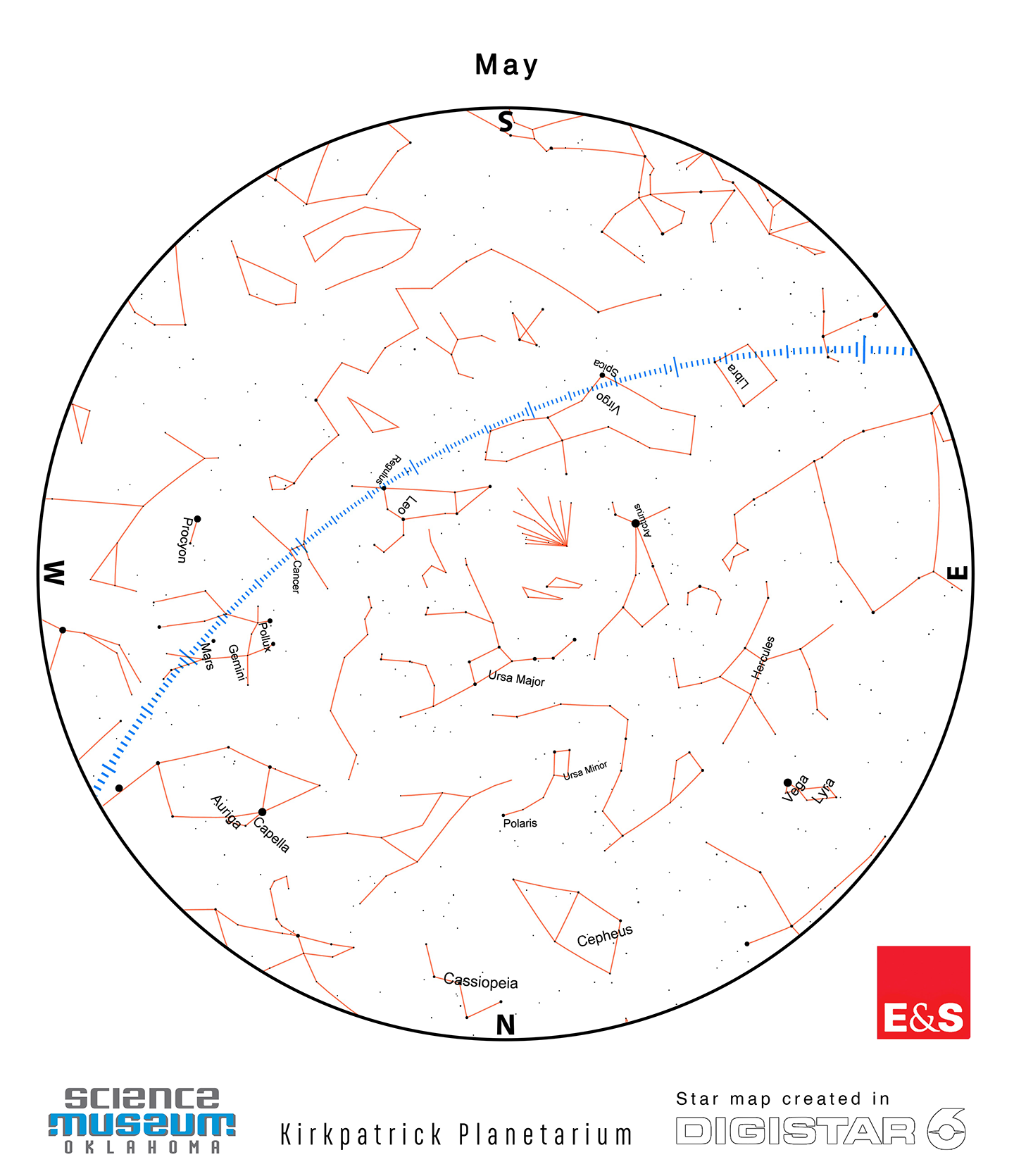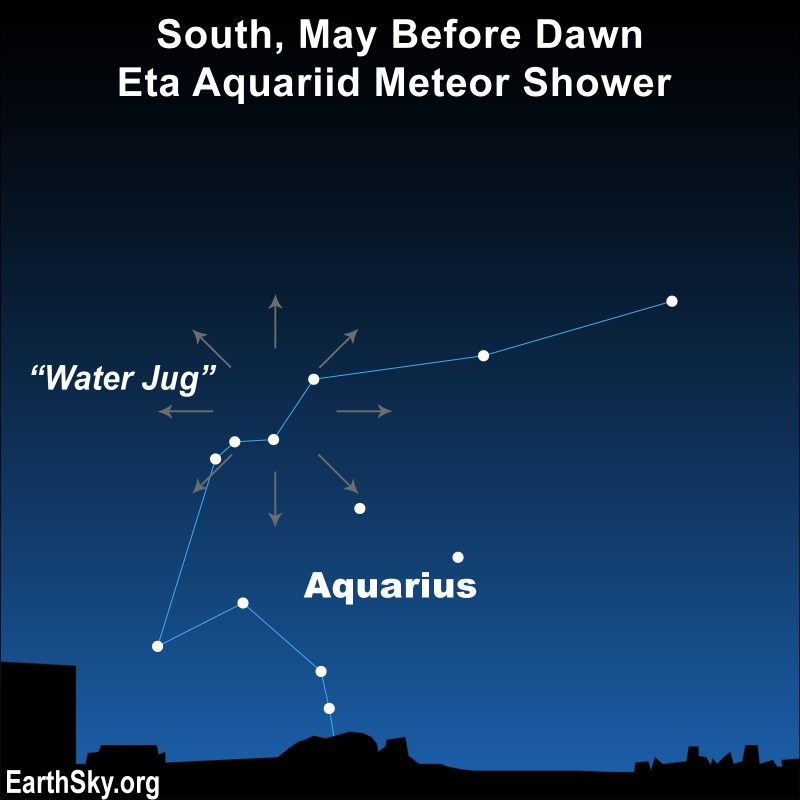Red Dirt Astronomy: Skies & Space for May
May 2, 2023
Planets
Mercury - For the first half of May, Mercury will be too close to the Sun to observe. However, during the later half of the month, Mercury can be seen in the very-early-morning sky rising just before the Sun low in the east. It reaches its greatest western elongation on the 29th making it the best day to try and catch a glimpse of our tiny neighbor.
Venus - Venus will continue to be bright and high in the western evening sky throughout the month, as it climbs in elongation from the Sun. It can very easily be viewed from the city, second in brightness only to the Moon, anytime from sunset to Midnight for the entire month of May. It will make a close pass by the Moon on the 23rd.
Mars - As it lowers in the western evening sky throughout the month and gradually dips in brightness, Mars will still be seen throughout May as it passes through the border between the constellations Gemini and Cancer roughly half-way through the month. On the 23rd-24th, Mars will join the Moon, Venus, Pollux, and Castor in an excellent cluster of celestial objects.
Jupiter - Early in May, Jupiter will begin emerging in the early morning sky in the east, just before sunrise. It will cross the border between the constellations Pisces and Aries, and will remain in Aries for the rest of the year. It will make a close pass by the crescent Moon on the 17th. While Jupiter will experience several double shadows and transits throughout the second half of May, the placement of Jupiter and the timing of these events will make it very challenging to observe, if not impossible.
Saturn - Again, spending the month in Aquarius, Saturn will progressively separate from the Sun throughout May, making for some great early morning viewing, around 5 a.m. throughout the month. The next time Saturn will be visible in the evening around 9 p.m. is mid-August. Otherwise, you will have to wake up early to get a view of this ringed giant.
Uranus - Throughout the month of May, Uranus will be too close to the Sun for observation.
Neptune - Similar to Saturn, Neptune can be seen in the early morning sky with a telescope between the constellations of Pisces and Aquarius.
Sky & Space Events and Anniversaries: May 2023
May 5 - Full Moon, Penumbral Lunar Eclipse in the Southern Hemisphere,
May 5 - Alan Shepard becomes the first American in space (1961)
May 6 - Predicted peak of Eta Aquarids meteor shower Saturday night
May 7 - Antares near Moon
May 12 - Last Quarter Moon
May 12 - First image of the Milky Way’s black hole (Sagittarius A*) (2022)
May 15 - Neptune near Moon
May 17 - Jupiter near Moon
May 18 - Apollo 10 launches (1969)
May 19 - New Moon
May 23 - Venus near Moon
May 24 - Moon, Venus, Mars, Pollux, and Castor all grouped closely in the sky
May 25 - The science fiction film Star Wars premieres in theaters (1977)
May 27 - First Quarter Moon
May 29 - Mercury at greatest western elongation
Object of the Month: Eta Aquarid Meteor Shower
Normally this meteor shower, most prominent in the first week of May in the southern hemisphere, has a predicted hourly rate of around 60 meteors per hour in a clear, dark sky. However, even though the moon will be nearly full during this shower's peak making for less-than-favorable conditions, you won’t want to miss your chance to catch them this year. Named for one of the brightest stars in the constellation of Aquarius, many of these meteors leave an ionization trail as they burn up high in the Earth’s atmosphere, sometimes hanging in the sky for several seconds after the meteor has faded. This year, astronomers are suggesting the possibility of significant outburst causing meteor rates to nearly double to around 120 meteors per hour. This is due to particles ejected from Comet Halley in 390 BC that happen to be joining the show this year.
Although viewing this shower in the northern hemisphere isn’t favorable, and there will be a full moon to make observations even more challenging, you can look for this meteor shower in the Eastern morning sky around 4 AM on the weekend of May 5th-7th. Look for the constellation of Aquarius, the water-bearer. The radiant -- the point of origin of the shower -- can be found near the “water jug” at the top-left of the constellation.



